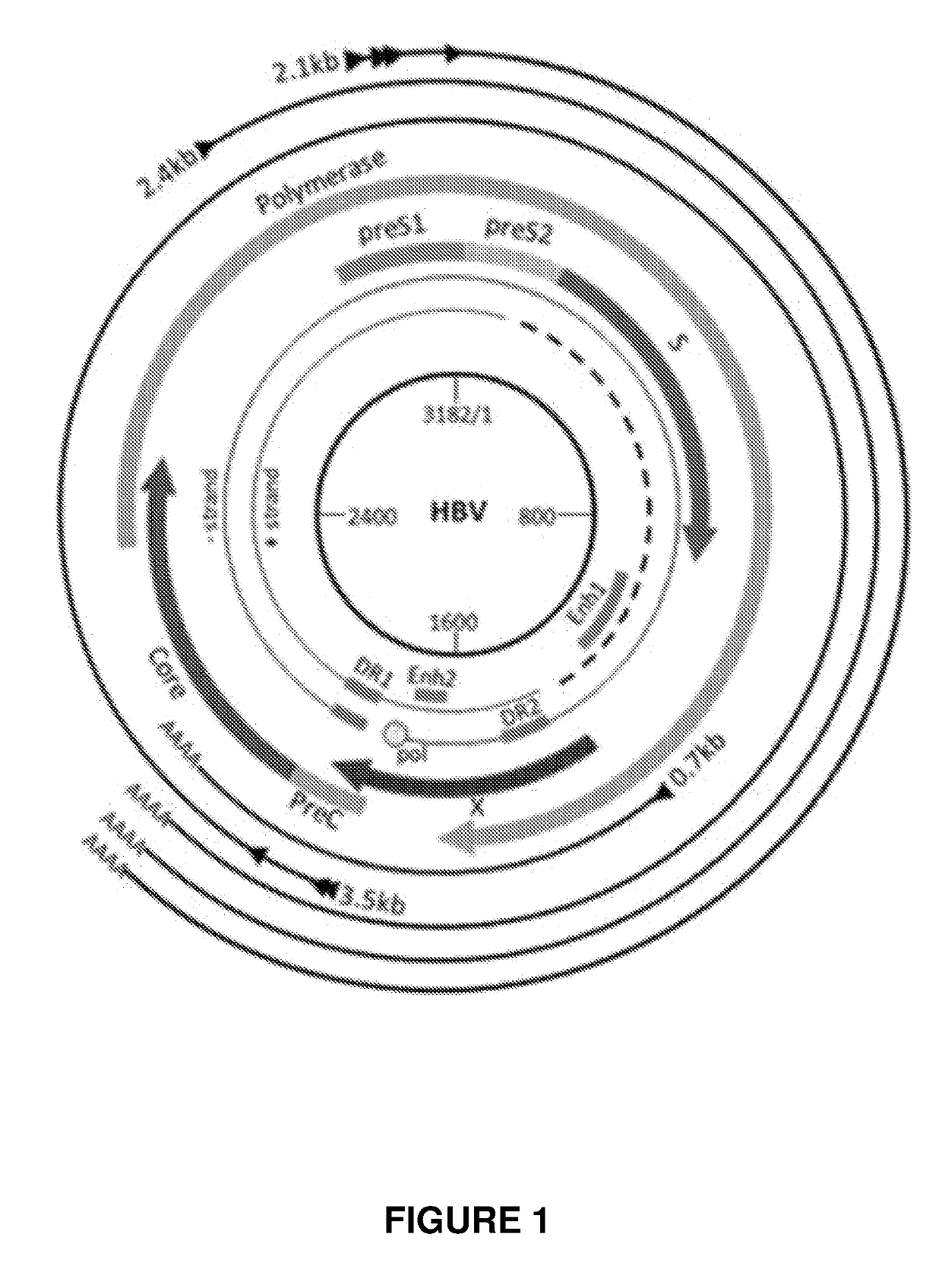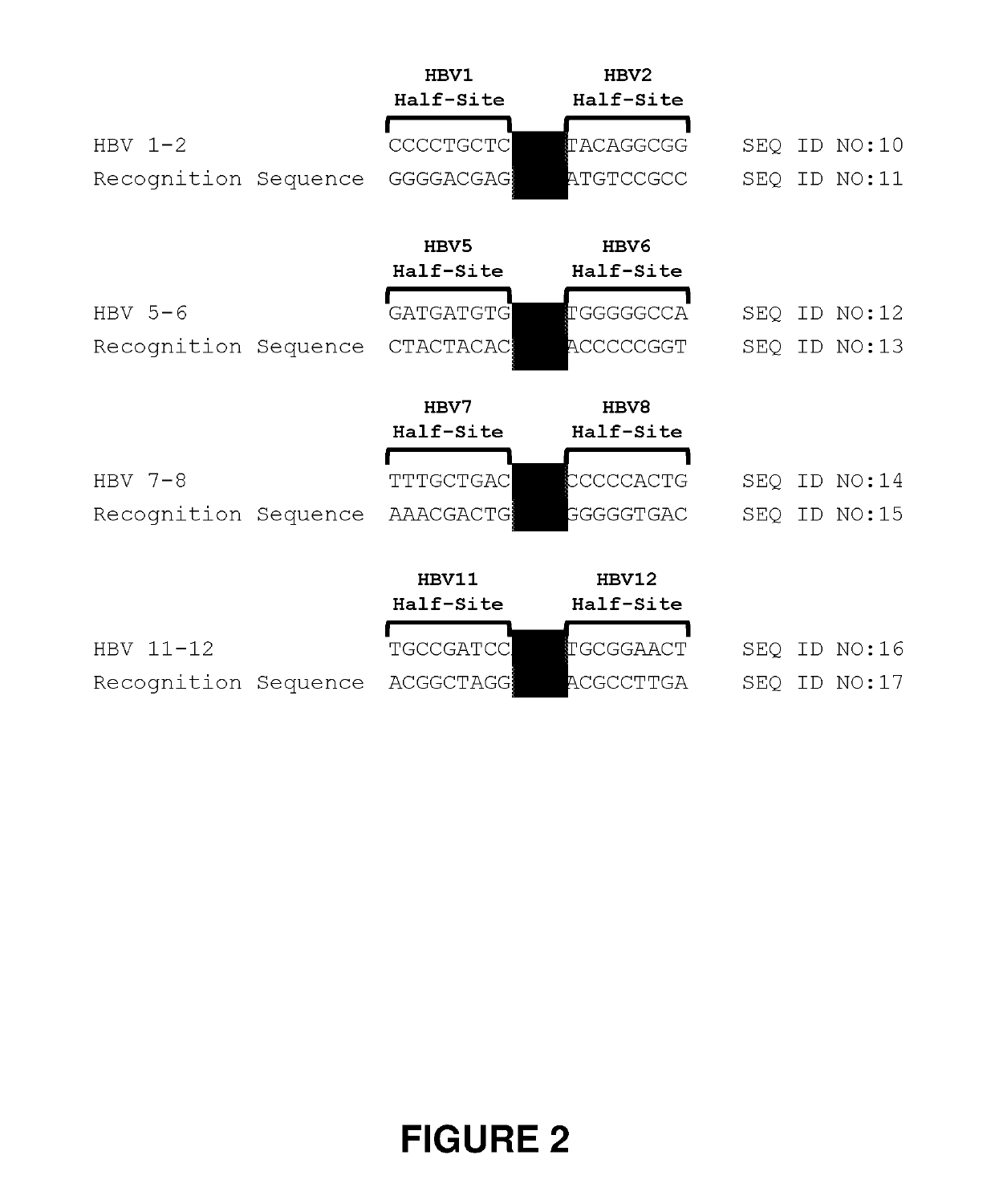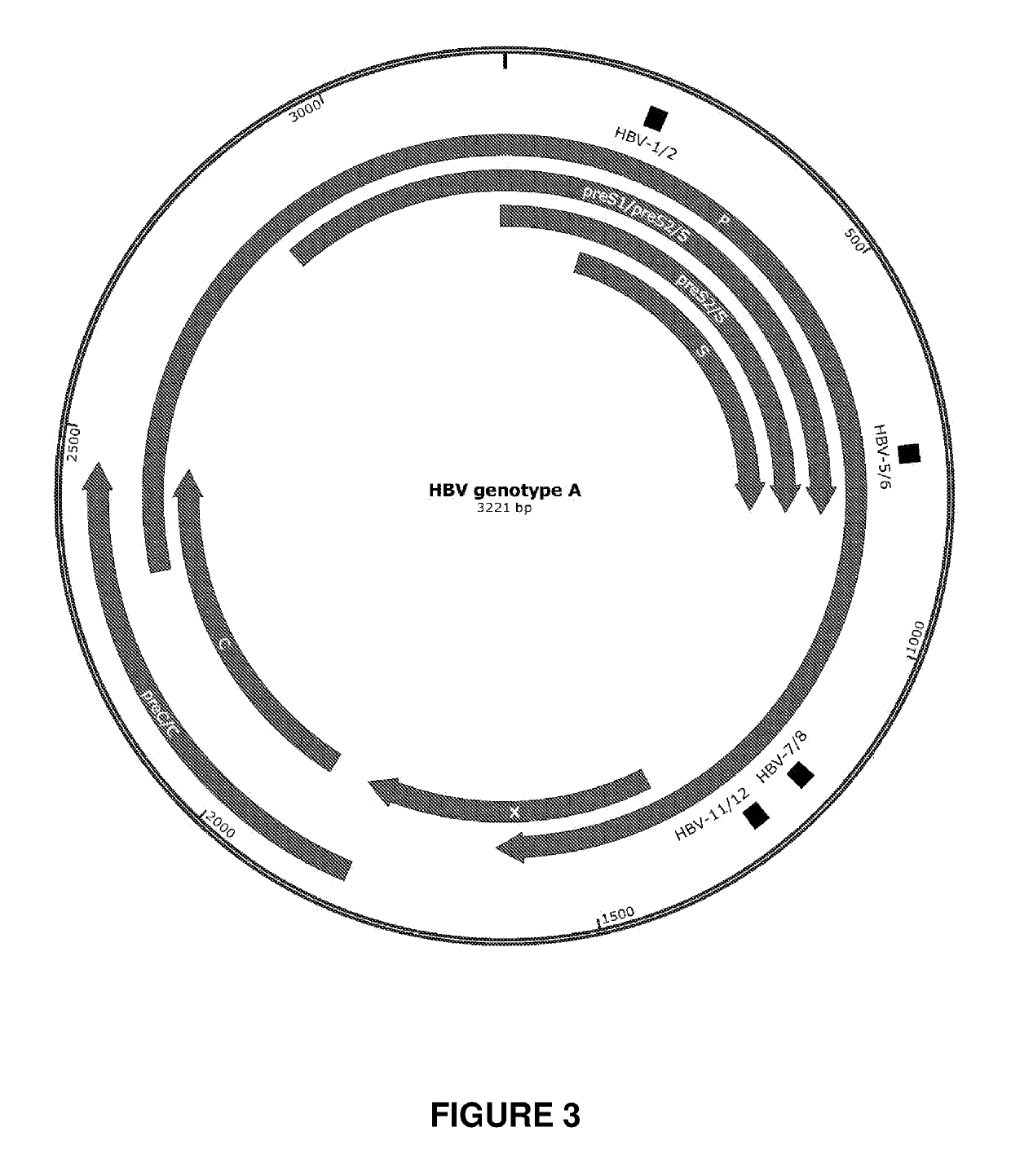Engineered meganucleases specific for recognition sequences in the hepatitis b virus genome
a meganuclease and hepatitis b virus technology, applied in the field of recombinant nucleic acid technology, can solve the problems of affecting gene expression, disrupting the expression of one or more viral proteins, etc., and achieve the effects of reducing symptoms, and reducing the level or proliferation of hbv
- Summary
- Abstract
- Description
- Claims
- Application Information
AI Technical Summary
Benefits of technology
Problems solved by technology
Method used
Image
Examples
example 1
[0298]Characterization of Meganucleases that Recognize and Cleave HBV Recognition Sequences
[0299]Meganucleases that Recognize and Cleave the HBV 1-2 Recognition Sequence
[0300]Engineered meganucleases (SEQ ID NOs: 18-21), collectively referred to herein as “HBV 1-2 meganucleases,” were engineered to recognize and cleave the HBV 1-2 recognition sequence (SEQ ID NO: 10), which is positioned within the P protein, S, preS2 / S, and preS1 / preS2 ORFs of multiple HBV genotypes including genotype A, B, C, E, F, and G (e.g., SEQ ID NOs: 3-5 and 7-9, respectively). Each HBV 1-2 engineered meganuclease comprises an N-terminal nuclease-localization signal derived from SV40, a first meganuclease subunit, a linker sequence, and a second meganuclease subunit. A first subunit in each HBV 1-2 meganuclease binds to the HBV1 recognition half-site of SEQ ID NO: 10, while a second subunit binds to the HBV2 recognition half-site (see, FIG. 2).
[0301]The HBV1-binding subunits and HBV2-binding subunits each co...
example 2
[0319]HBV-Specific Nucleases Eliminate Plasmid DNA in E. coli
[0320]Bacterial Reporter System Utilizing Episomal DNA
[0321]The purpose of this experiment was to evaluate HBV meganucleases of the invention for their ability to recognize and cleave recognition sequences within episomal DNA plasmids in an E. coli reporter system.
[0322]A plasmid called “pARCUS” was generated to drive inducible expression of an ARCUS nuclease (FIG. 9A). In pARCUS, an ARCUS nuclease (here, either HBV 5-6x.33 or HBV 11-12x) is placed under the control of an IPTG-inducible promoter. Additionally, to allow for selection of transformed bacteria, pARCUS encodes an ampicillin resistance gene. pARCUS is a low copy plasmid so that induced expression of an ARCUS nuclease does not result in over-expression.
[0323]An additional plasmid called “pHBVa” was generated (FIG. 9A). pHBVa carries a large fragment of the HBV genome, including the recognition sequences for HBV 5-6 and HBV 11-12. The plasmid also encodes a kanam...
example 3
Targeting HBV Viral Genomes in Cells
[0332]Treatment of AD38 Cells Expressing an HBV Genome
[0333]A primary purpose of these Examples was to evaluate whether meganucleases of the invention were capable of inactivating and / or eliminating HBV genomes in HBV-infected mammalian cells.
[0334]In a first study, meganuclease effectiveness was evaluated in an AD38 cell line which stably expresses an HBV genome under a Tet promoter. This AD38 cell line does not generate active viral particles but does generate HBV S antigen (HBsAg) which is detectable in the cell medium. In this study, cells were transfected with a DNA plasmid encoding either HBV 5-6x.33 or HBV 11-12x.26. Both of these engineered meganucleases target a sequence specific to the HBV genome, with HBV 5-6x.33 targeting a sequence within the overlapping S (HBsAg gene) and P (polymerase gene) reading frames and HBV 11-12x.26 targeting the P gene. As a control, AD38 cells were transfected with a plasmid encoding the red fluorescent pro...
PUM
| Property | Measurement | Unit |
|---|---|---|
| diameter | aaaaa | aaaaa |
| diameter | aaaaa | aaaaa |
| length scale | aaaaa | aaaaa |
Abstract
Description
Claims
Application Information
 Login to View More
Login to View More - R&D
- Intellectual Property
- Life Sciences
- Materials
- Tech Scout
- Unparalleled Data Quality
- Higher Quality Content
- 60% Fewer Hallucinations
Browse by: Latest US Patents, China's latest patents, Technical Efficacy Thesaurus, Application Domain, Technology Topic, Popular Technical Reports.
© 2025 PatSnap. All rights reserved.Legal|Privacy policy|Modern Slavery Act Transparency Statement|Sitemap|About US| Contact US: help@patsnap.com



